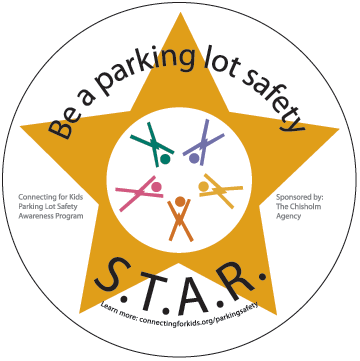Parking Lot Safety Awareness |
Parking lots are one of the most dangerous places young children encounter, and yet families find themselves having to navigate parking lots on a daily basis as they get their children to school, go grocery shopping, attend religious services and move throughout the community. According to statistics, an average of 50 children per week are injured by being backed over in a parking lot or driveway. Despite the increasing prevalence of back-up cameras in vehicles, parking lots remain dangerous for families due to:
While all children are at risk in parking lots, children with disabilities can be even more vulnerable due to limited impulse control, difficulty understanding consequences, processing delays, limited vision or mobility challenges. Connecting for Kids encourages all families to have a conversation about the best ways to keep children safe in parking lots and driveways. To assist in this process, the following resources are available: |
IMPORTANT: Resources on this website are provided for your information only and do not constitute medical advice or an endorsement of any clinical or therapeutic method, treatment, service, safety device, safety product, organization or vendor. Connecting for Kids is not responsible for the content produced by, or the services rendered by, any third party that is referenced. Be sure to consult with your child’s health care provider concerning these tips. |
